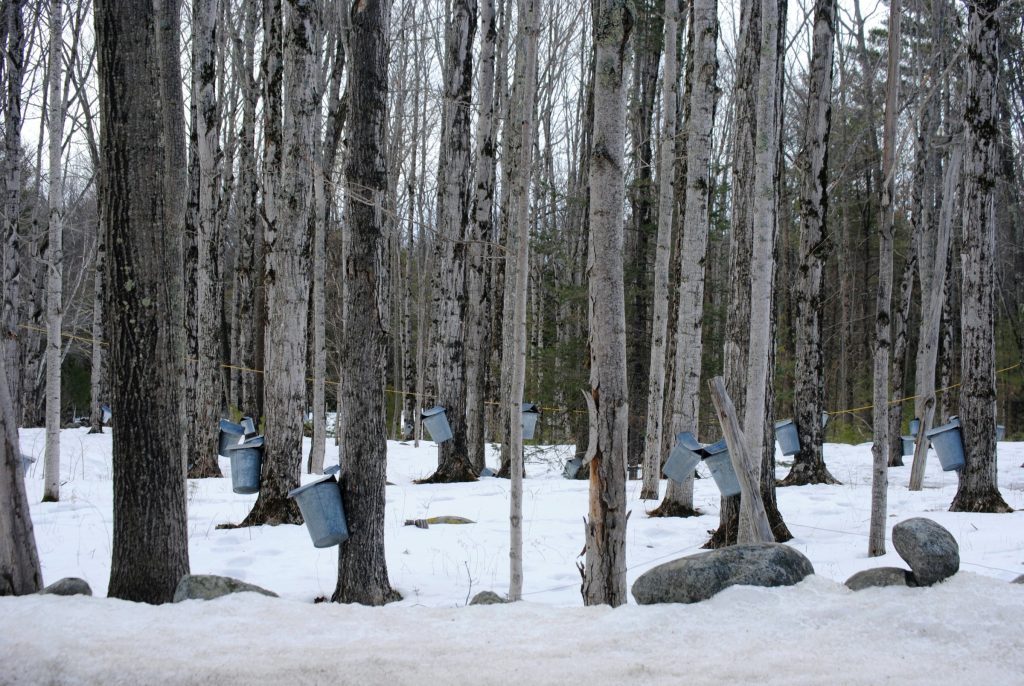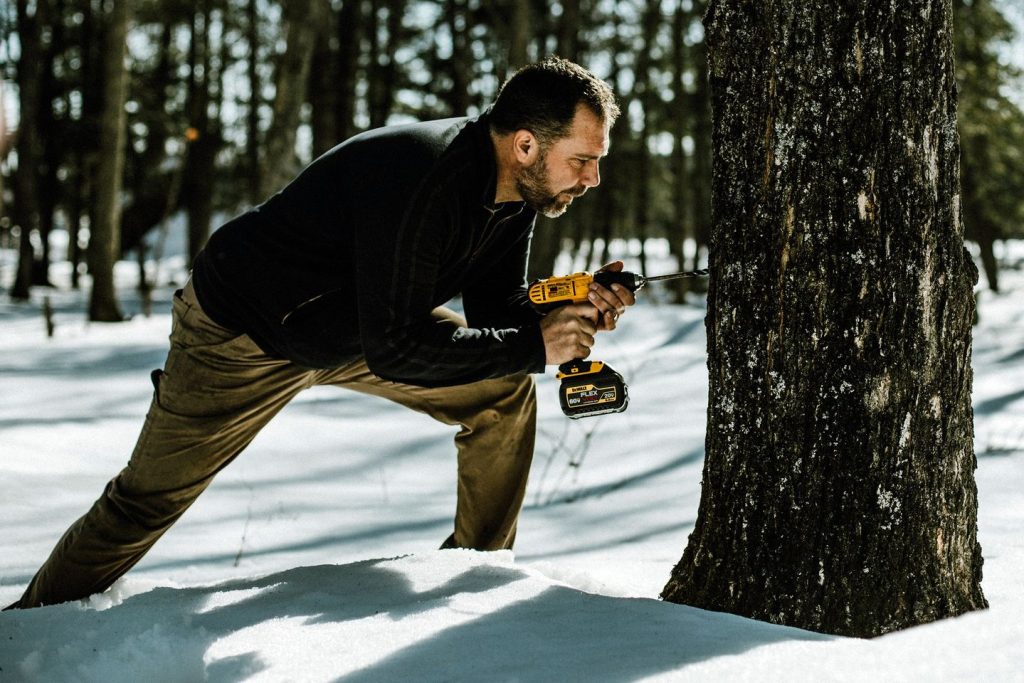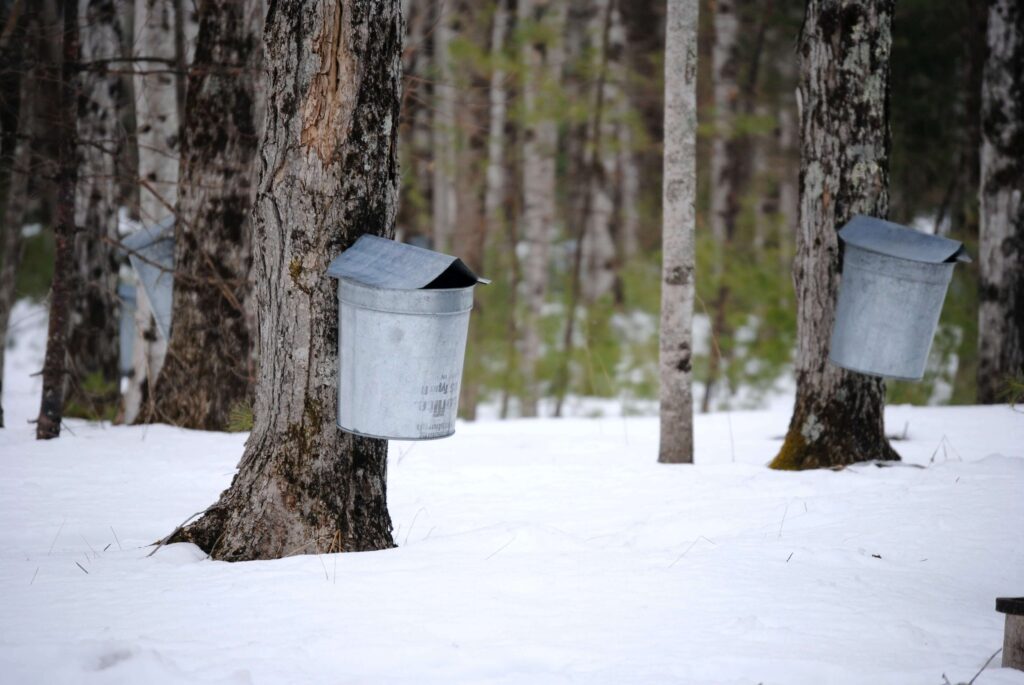Global warming is causing numerous environmental changes, impacting the production of maple syrup in Wisconsin and beyond. Fortunately, the Maple Syrup Program through the University of Wisconsin–Madison Division of Extension is offering new ways for producers to adapt.
The program recently released its Climate Adaptation Menu, a guide that provides solutions to challenges associated with warming temperatures. Scott Hershberger, a student assistant for the Maple Syrup Project and a graduate student at the University of Wisconsin–Madison, designed the menu.
The menu provides solutions to diverse issues encountered by maple syrup producers, ranging from changing soil compositions to reduced sugar content in sap. According to Hershberger, the menu encourages producers to apply their place-based knowledge of their land to facilitate the adaptation of their maple production.

“Climate change is causing a lot of different environmental impacts in every ecosystem and the specific impacts that someone is going to be noticing on their land may be different from landowner to landowner or from producer to producer. And individual circumstances are going to affect how that person can most effectively deal with the changes that they’re seeing around them,” says Hershberger.
The menu offers solutions to both small- and large-scale producers, and also helps them achieve both short- and long-term goals for their land and maple syrup production.
The impacts of climate change on land are diverse, but the menu helps address them. As the weather and climate warm in Wisconsin, the menu offers solutions to temperature fluctuations, reduced snowpack, and extreme rainfall and drought. It also offers insight into changing ecosystems, including the northward migration of maples and the arrival of invasive species.
“Cultivating diversity in your woods is really important…That’s diversity in terms of ages of your trees, species, and sizes, as well spacing [of trees] even…That’s very much a forest management strategy that’s just going to be good for the health of the ecosystem, which then will be good for your syrup production,” says Hershberger.
Extension Area Director and fourth generation maple syrup producer Jeremy Solin has produced maple syrup for most of his life. His family has owned land in Northern Wisconsin for over 100 years and have been harvesting its maple syrup for most of that time. He and his family have already observed changes in their sugarbush as a result of the changing climate.

“My dad always talked about tapping trees in early April…and our season now really starts in early to mid-March at the latest, sometimes it’s wrapped up by April. So it’s shifted by a few weeks earlier,” says Solin.
Solin says that most of the management techniques his family uses involve place-based knowledge of their land, which helps them detect and respond to adverse changes in their forests.
Outside of ecological management, the menu also includes production management techniques for maple syrup. As summers become warmer, the sugar content in sap decreases, which has implications for the amount of maple syrup or sugar a producer makes.
“The more water you have in your sap, the lower the sugar content, the longer you have to boil it, which means, one, you’re spending more time and more fuel on boiling. Second, that means that your final yield of syrup for the same amount of sap is going to be lower. So you’re going to have less of your product to sell at the end of the day,” says Hershberger.
The increased yearly warming also affects the cycle of freezing and thawing temperatures in spring that determines how long the tapping season is. When there are fewer oscillations between freezing nights and thawing days, the tapping season shortens, leading to reduced sap yield.
So, the menu proposes adaptations like energy assessments, tree selection, and funding opportunities to maintain the profitability of maple syrup production. Solin explains that as the maple range moves north due to warming temperatures, warm-tolerant trees like the red maple can be more heavily selected for tapping.
“On the southern end of the maple range, red maple are forecasted to continue to do pretty well. So, I think there’ll be some shift in production from sugar maple to red maple, and there doesn’t really seem to be a production difference or a quality difference there,” says Solin.
Some of the strategies on the menu relate to environmental issues that are not necessarily associated with climate change, but matter to producers and landowners as they strive to maintain healthy land and ecosystems.

“As an individual producer, you’re not going to be doing much to actually mitigate climate change, you’ll just be…adapting to its impacts. But some of the other things that are on the menu, there is more…power of individuals to mitigate on their lands, like the spread of earthworms,” says Hershberger.
Hershberger created the menu after consulting with maple syrup and forestry researchers and academic papers. As a graduate student, Scott Hershberger is researching communication strategies to promote self-efficacy in the public.
“Communication strategies that just use fear don’t motivate people to take action. Instead, we need to focus on solutions and give people the tools they need to feel empowered. Adaptation menus are a great way to do that,” Hershberger says.
Hershberger is not the first to create an adaptation menu. In fact, the concept of adaptations have been developed by other organizations like the Northern Institute of Applied Climate Science, which have created menus for many topics in land management.
For many people, including Solin’s family, maple syrup is more than just a commodity, but a community, cultural, and even spiritual connection between people and nature. The adaptation menu will help serve communities who rely on maple syrup’s diverse benefits and equip the next generation of syrup producers with the knowledge they need to succeed.
“Although a lot of these changes are bad, maple syrup as an overall industry is going to survive,” says Hershberger. “It will adapt and there’s still going to be plenty of places where it’s feasible to do it and make a profit.”
Keep up to date with the Maple Syrup Program by visiting their blog, Facebook, or subscribing to their newsletter!




